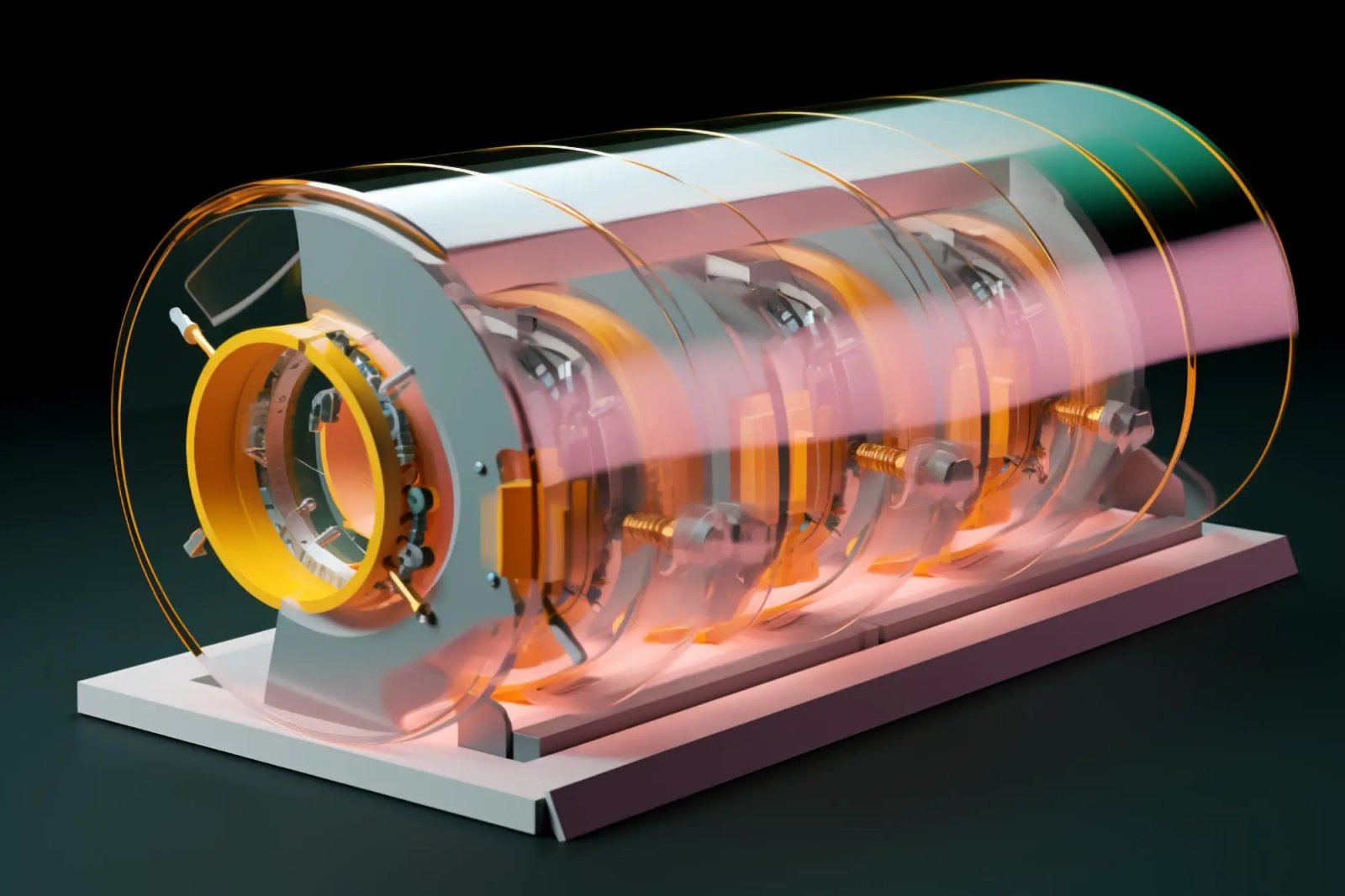Extremely-small “change” could possibly be simply scaled.
A group of scientists from MIT, together with their colleagues, have developed a easy superconducting gadget that would switch present by means of digital gadgets way more effectively than is feasible right this moment. Consequently, the brand new diode, a sort of change, may dramatically cut back the power consumption of high-power computing methods. It is a urgent problem that’s predicted to turn into much more vital sooner or later. Although it’s within the early phases of improvement, the diode is greater than twice as environment friendly as related ones reported by others. It may even be integral to rising quantum computing applied sciences.
MIT scientists and colleagues have created a easy superconducting gadget that would switch present by means of digital gadgets way more effectively than is feasible right this moment. Consequently, the brand new diode, a sort of change, may dramatically lower the quantity of power utilized in high-power computing methods, a serious downside that’s estimated to turn into a lot worse. Although it’s within the early phases of improvement, the diode is greater than twice as environment friendly as related ones reported by others. It may even be integral to rising quantum computing applied sciences.
The work, which is reported within the July 13 on-line problem of Bodily Assessment Letters, can be the topic of a information story in Physics Journal.
“This paper showcases that the superconducting diode is a wholly solved downside from an engineering perspective,” says Philip Moll, Director of the Max Planck Institute for the Construction and Dynamics of Matter in Germany. Moll was not concerned within the work. “The fantastic thing about [this] work is that [Moodera and colleagues] obtained document efficiencies with out even making an attempt [and] their constructions are removed from optimized but.”
“Our engineering of a superconducting diode impact that’s sturdy and might function over a large temperature vary in easy methods and probably opening the door for novel applied sciences,” says Jagadeesh Moodera, chief of the present work and a senior analysis scientist in MIT’s Division of Physics. Moodera can be affiliated with the Supplies Analysis Laboratory, the Francis Bitter Magnet Laboratory, and the Plasma Science and Fusion Middle (PSFC).
The nanoscopic rectangular diode—about 1,000 occasions thinner than the diameter of a human hair—is well scalable. Tens of millions could possibly be produced on a single silicon wafer.
Towards a superconducting change
Diodes, gadgets that enable present to journey simply in a single path however not within the reverse, are ubiquitous in computing methods. Trendy semiconductor pc chips comprise billions of diode-like gadgets referred to as transistors. Nevertheless, these gadgets can get very popular as a consequence of electrical resistance, requiring huge quantities of power to chill the high-power methods within the information facilities behind myriad fashionable applied sciences, together with cloud computing. In accordance with a 2018 information characteristic in Nature, these methods may use practically 20 p.c of the world’s energy in ten years.
Consequently, work towards creating diodes fabricated from superconductors has been a sizzling subject in condensed matter physics. That’s as a result of superconductors transmit present with no resistance in any respect under a sure low temperature (the essential temperature), and are due to this fact way more environment friendly than their semiconducting cousins, which have noticeable power loss within the type of warmth.
Till now, nevertheless, different approaches to the issue have concerned way more sophisticated physics. “The impact we discovered is due [in part] to a ubiquitous property of superconductors that may be realized in a quite simple, easy method. It simply stares you within the face,” says Moodera.
Says Moll of the Max Planck Institute for the Construction and Dynamics of Matter, “the work is a crucial counterpoint to the present vogue to affiliate superconducting diodes [with] unique physics, similar to finite-momentum pairing states. Whereas in actuality, a superconducting diode is a standard and wide-spread phenomenon current in classical supplies, because of sure damaged symmetries.”
A considerably serendipitous discovery
In 2020 Moodera and colleagues noticed proof of an unique particle pair referred to as Majorana fermions. These particle pairs may result in a brand new household of topological qubits, the constructing blocks of quantum computer systems. Whereas pondering approaches to creating superconducting diodes, the group realized that the fabric platform they developed for the Majorana work may also be utilized to the diode downside.
They had been proper. Utilizing that common platform, they developed completely different iterations of superconducting diodes, every extra environment friendly than the final. The primary, for instance, consisted of a nanoscopically skinny layer of vanadium, a superconductor, which was patterned right into a construction frequent to electronics (the Corridor bar). After they utilized a tiny magnetic area similar to the Earth’s magnetic area, they noticed the diode impact – an enormous polarity dependence for present circulate.
They then created one other diode, this time layering a superconductor with a ferromagnet (a ferromagnetic insulator of their case), a cloth that produces its personal tiny magnetic area. After making use of a tiny magnetic area to magnetize the ferromagnet in order that it produces its personal area, they discovered a good greater diode impact that was steady even after the unique magnetic area was turned off.
Ubiquitous properties
The group went on to determine what was taking place.
Along with transmitting present with no resistance, superconductors additionally produce other, much less well-known however simply as ubiquitous properties. For instance, they don’t like magnetic fields getting inside. When uncovered to a tiny magnetic area, superconductors produce an inner supercurrent that induces its personal magnetic flux that cancels the exterior area, thereby sustaining their superconducting state. This phenomenon, referred to as the Meissner screening impact, will be regarded as akin to our our bodies’ immune system releasing antibodies to battle the an infection of micro organism and different pathogens. This works, nevertheless, solely as much as some restrict. Equally, superconductors can’t solely hold out massive magnetic fields.
The diodes the group created make use of this common Meissner screening impact. The tiny magnetic area they utilized—both straight, or by means of the adjoining ferromagnetic layer—prompts the fabric’s screening present mechanism for expelling the exterior magnetic area and sustaining superconductivity.
The group additionally discovered that one other key think about optimizing these superconductor diodes is tiny variations between the 2 sides or edges of the diode gadgets. These variations “create some type of asymmetry in the way in which the magnetic area enters the superconductor,” Moodera says.
By engineering their very own type of edges on diodes to optimize these variations—for instance, one edge with sawtooth options, whereas the opposite edge not deliberately altered—the group discovered that they may improve the effectivity from 20 p.c to greater than 50 p.c. This discovery opens the door for gadgets whose edges could possibly be “tuned” for even increased efficiencies, Moodera says.
In sum, the group found that the sting asymmetries inside superconducting diodes, the ever present Meissner screening impact present in all superconductors, and a 3rd property of superconductors referred to as vortex pinning all got here collectively to provide the diode impact.
“It’s fascinating to see how inconspicuous but ubiquitous components can create a big impact in observing the diode impact,” says Yasen Hou, first creator of the paper and a postdoctoral affiliate on the Francis Bitter Magnet Laboratory and the PSFC. “What’s extra thrilling is that [this work] gives a simple strategy with enormous potential to additional enhance the effectivity.”
Christoph Strunk is a professor on the College of Regensburg in Germany. Says Strunk, who was not concerned within the analysis, “the current work demonstrates that the supercurrent in easy superconducting strips can turn into non-reciprocal. Furthermore, when mixed with a ferromagnetic insulator, the diode impact may even be maintained within the absence of an exterior magnetic area. The rectification path will be programmed by the remanent magnetization of the magnetic layer, which can have excessive potential for future functions. The work is necessary and interesting each from the essential analysis and from the functions viewpoint.”
Teenage contributors
Moodera famous that the 2 researchers who created the engineered edges did so whereas nonetheless in highschool throughout a summer time at Moodera’s lab. They’re Ourania Glezakou-Elbert of Richland, Washington, who shall be going to Princeton this fall, and Amith Varambally of Vestavia Hills, Alabama, who shall be getting into the California Institute of Know-how.
Says Varambally, “I didn’t know what to anticipate once I set foot in Boston final summer time, and positively by no means anticipated to [be] a coauthor in a Bodily Assessment Letters paper.
“Every single day was thrilling, whether or not I used to be studying dozens of papers to higher perceive the diode phenomena, or working equipment to manufacture new diodes for examine, or participating in conversations with Ourania, Dr. Hou, and Dr. Moodera about our analysis.
“I’m profoundly grateful to Dr. Moodera and Dr. Hou for offering me with the chance to work on such an interesting mission, and to Ourania for being an excellent analysis associate and buddy.”
Reference: “Ubiquitous Superconducting Diode Impact in Superconductor Skinny Movies” by Yasen Hou, Fabrizio Nichele, Dangle Chi, Alessandro Lodesani, Yingying Wu, Markus F. Ritter, Daniel Z. Haxell, Margarita Davydova, Stefan Ilić, Ourania Glezakou-Elbert, Amith Varambally, F. Sebastian Bergeret, Akashdeep Kamra, Liang Fu, Patrick A. Lee and Jagadeesh S. Moodera, 13 July 2023, Bodily Assessment Letters.
DOI: 10.1103/PhysRevLett.131.027001
Along with Moodera and Hou, corresponding authors of the paper are Professors Patrick A. Lee of MIT Physics and Akashdeep Kamra of Universidad Autónoma de Madrid. Different authors from MIT are Liang Fu and Margarita Davydova of MIT Physics, and Dangle Chi, Alessandro Lodesani, and Yingying Wu, the entire Francis Bitter Magnet Laboratory and the Plasma Science and Fusion Middle. Chi can be affiliated with the U.S. Military CCDC Analysis Laboratory.
Authors additionally embrace Fabrizio Nichele, Markus F. Ritter, and Daniel Z. Haxwell of IBM Analysis Europe; Stefan Ilićof Centro de Física de Materiales (CFM-MPC); and F. Sebastian Bergeret of CFM-MPC and Donostia Worldwide Physics Middle.
This work was supported by the Air Drive Workplace of Sponsored Analysis, the Workplace of Naval Analysis, the Nationwide Science Basis, and the Military Analysis Workplace. Extra funders are the European Analysis Council, the European Union’s Horizon 2020 Analysis and Innovation Framework Programme, the Spanish Ministerio de Ciencia e Innovacion, the A. v. Humboldt Basis, and the Division of Power’s Workplace of Fundamental Sciences.



